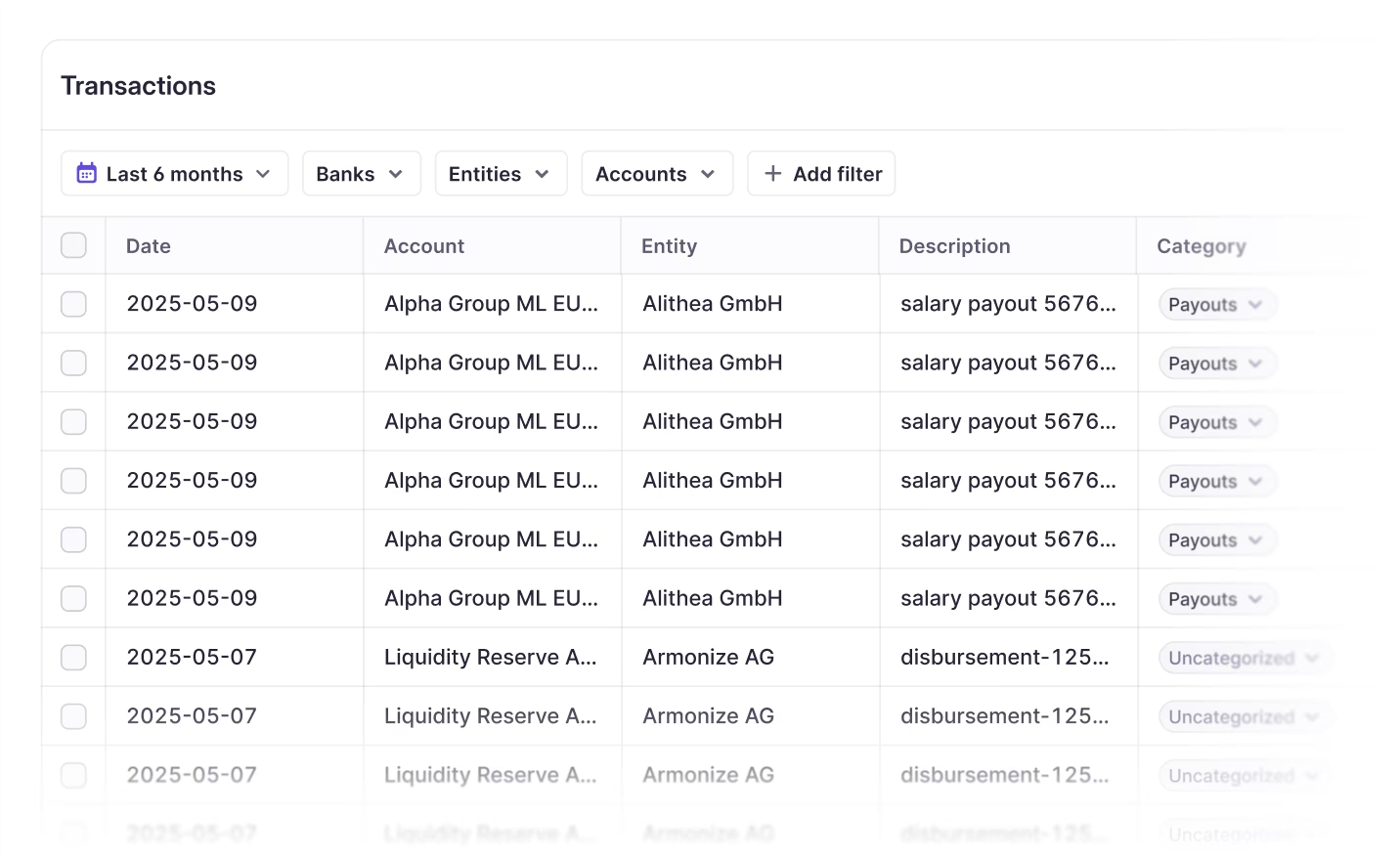What is continuous accounting?
Continuous accounting refers to the tracking and reconciling of your financial activity on an ongoing basis.

Introduction to continuous accounting
Continuous accounting is a modern approach to accounting where your accounting tasks, such as tracking and reconciliation, are completed on an ongoing basis. Traditional accounting waits for the end of a financial period to close the books, condensing a lot of work into a tight timeframe. Now, with the help of digital tools, accounting tasks can be completed virtually in the background. By spreading tasks evenly throughout the accounting period, continuous accounting can significantly reduce the workload of your accounting teams.
Continuous accounting also ensures your financial reporting is always up-to-date. That’s why it’s sometimes referred to as continuous close, meaning you could close your books at any moment because the financial data is always current.
How continuous accounting works
Continuous accounting is based on the following key principles.
Automation
This is the cornerstone of continuous accounting. By using modern software, you can automate repetitive and routine tasks. These include:
- Matching cash transactions with bank records
- Aligning incoming payments with outstanding customer invoices
- Assigning accounts payable invoices to the appropriate general ledger expense category
- Checking supplier invoices against open purchase orders
By automating these tasks, you’ll free up your team to focus on strategic activities such as integrity and accuracy of outcomes. It also reduces the risk of human error.
Operationally, accounting processes can be automated through bank-ERP integrations. For example, Atlar enables companies to trigger payment runs from inside their ERP, such as NetSuite or Dynamics 365, and sync bank statements back to their ERP. This lets companies automate accounting and AP processes at scale with full bank-ERP syncing and a high degree of internal control.
Real-time processing
Continuous accounting requires the real-time processing of financial transactions. So, instead of waiting until the end of a period to reconcile accounts and make adjustments, transactions are processed and recorded as they occur. This ensures your financial data is always up-to-date and you have a current and accurate view of your financial position.
Connected technology
Continuous accounting only works if your systems are connected in the back end. Once data is flowing smoothly, you’ll enjoy real-time visibility and can reduce the time and effort needed to consolidate information from siloed systems. Modern accountancy solutions offer API integrations into banking and accountancy platforms, making it simple to connect and view everything in one place.
Continuous improvement
Continuous accounting relies on a top-down commitment to creating a culture of ongoing improvement. Leaders should endorse the benefits of agility and foster an environment where continuous improvement is integral to the organization. Advantages to highlight could include:
- Streamlined workloads
- Increased personal productivity
- Reduced grunt work
- Less overtime during closings
The two types of ledgers in continuous accounting
Continuous accounting depends on two types of ledgers: the general ledger and the subsidiary ledger. Together, these ensure that all your financial transactions are recorded, tracked, and reported accurately.
General ledger (GL)
The GL is the central repository of all your financial transactions and provides a comprehensive overview of your financial health. It includes all the accounts needed to prepare financial statements such as your:
- Assets
- Liabilities
- Equity
- Revenue
- Expenses
In continuous accounting, the GL is updated in real time.
Subsidiary ledger
Subsidiary ledgers provide detailed information about specific aspects of the financial transactions that are summarized in your GL. This lets you track and manage individual accounts at a more granular level.
Common types include:
- Accounts receivable (AR)
- Accounts payable (AP)
- Inventory
- Fixed assets
In continuous accounting, subsidiary ledgers are integrated with the GL and updated in real time.
Why adopt continuous accounting?
There are many benefits to be gained from continuous accounting. For example:
Improved accuracy
By processing transactions in real time and automating routine tasks, continuous accounting reduces the likelihood of errors.
Fast access to financial information
With financial data updated continuously, you can access timely and relevant information whenever you need it. This allows for more proactive financial management and quicker responses to changing business conditions.
Greater efficiency
Automation significantly reduces the time and effort needed for traditional accounting tasks, freeing up your team for higher-value activities.
Better compliance
Continuous accounting can improve your compliance by ensuring your financial records are always current and accurate.
Faster, more informed decisions
Real-time financial data gives you the insights needed to make informed and timely decisions and respond to market opportunities and challenges as they occur.
Challenges with continuous accounting
Of course, like everything, continuous accounting has its challenges. These include:
Implementation issues
Transitioning to a continuous accounting model can be complicated. It involves making significant changes to existing processes and systems and can meet with strong opposition amongst accounting and finance teams. So, proper planning and change management are essential.
Incompatibility with legacy systems
Many accountancy and Treasury Management Systems were built for a different era which means they are not compatible with continuous accounting. This can be solved by integrating with a modern, cloud-based system which is compatible with a range of software.
Data quality
The effectiveness of continuous accounting depends on the quality of your underlying data. To fully realize the benefits of this approach, you must ensure your data is accurate, complete and consistent.
Accounting for monthly expenses
Historically, expenses were recorded in the general ledger on a monthly basis. This included manually adjusting entries to allow for payroll and provisions for prepayments and the like. To get the most out of continuous accounting, your accounting software must be capable of calculating and executing daily accruals for these expenses, which can then be reconciled by month-end. To do this, you might need to adjust processes like payroll period cutoffs.
How to implement continuous accounting
Moving to continuous accounting involves new tech, plus an overhaul of internal processes. This can take time but to ensure it runs as smooth as possible, we recommend the following:
Plan thoroughly
Begin by assessing your current accounting processes and identify areas for improvement. Develop a detailed plan that clearly outlines the steps needed to transition to continuous accounting, including timelines, resource requirements, and key milestones.
Choose the right tech
You’ll need to ensure you have the right technology in place to support continuous accounting. This might include ERP systems, accounting software, automation tools, and data integration platforms. As a modern treasury platform, Atlar acts as a connective tissue between these different platforms, enabling you to seamlessly sync financial data and payments between different systems. See our full list of integrations for more information.
Redesign your processes
You will probably have to redesign existing accounting processes to align with the principles of continuous accounting. This involves breaking down traditional period-end tasks into smaller, more manageable activities that can be performed continuously.
Conduct training and change management
Training and support for your accounting teams is crucial if you want them to embrace the new processes and technologies.
Monitor and iterate
Once implemented you should continuously monitor the performance of your new processes. Collect feedback, identify areas for improvement, and make adjustments as needed.
How Atlar can help with continuous accounting
Efficient and accurate accounting is a cornerstone of every high-functioning finance team. The Atlar platform helps you modernize accounting processes with direct connections to over 40 major banks and counting, plus a number of key payment providers, expense management tools, and more.
By seamlessly integrating bank and ERP data in one place, Atlar removes the need to navigate between multiple systems, transfer files, and manually enter payment details. Through our native integrations with ERP systems like Oracle NetSuite and Microsoft Dynamics 365, customers can trigger payment runs with a click and automatically sync bank statements back to their ERP. Plus, you can leverage immutable audit trails for a detailed record of all actions, ensuring full transparency.
You can unsubscribe anytime.
Further reading
See Atlar in action.
Enter your work email to watch a live product demo.


